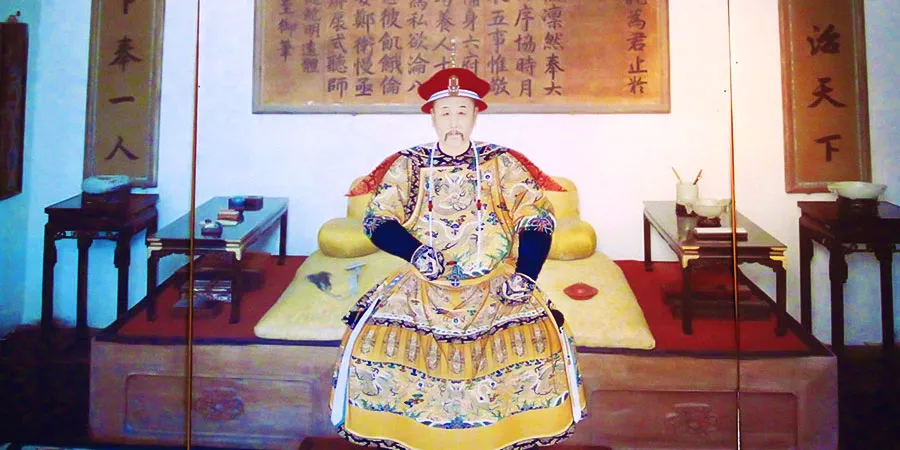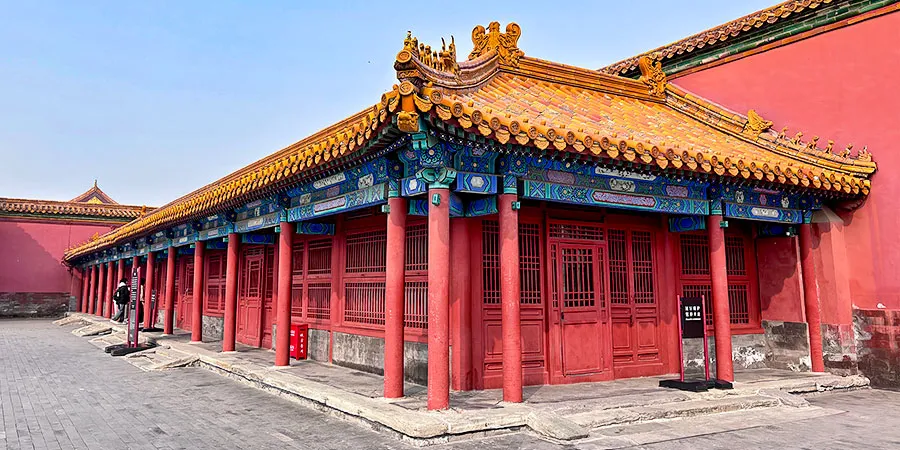Office of Military Strategy (Junjichu)
The Office of Military Strategy, occurring from 1729 to 1911, was the most significant and longest-lasting assistant institution for military command, administrative decisions, and other crucial issues in the Qing Dynasty (1644~1911). It is nestled inside the Gate of Great Ancestors (Longzongmen), on the west side of Qianqingmen Square within the Forbidden City.
Why was the Office of Military Strategy set up?
Response for a Military Crisis
To tackle the heavy military affairs in the northwest China in 1729, Emperor Yongzheng (1678~1735) established the Office of Military Strategy as a temporary military command center. Over time, it evolved into a permanent core institution for handling national military and political affairs.
 |
| Emperor Yongzheng (1678~1735) |
Bypassing Bureaucracy for Efficiency
Before the Office of Military Strategy existed, cabinet officials spent 3-5 days reviewing memorials, discussing matters, and presenting findings to the emperor. With the Office, memorials went directly to the emperor, issued within a day with expert advice, and critical issues like urgent military affairs received immediate verbal instructions, with imperial edicts drafted, sealed, and dispatched by the Ministry of War.
This streamlined process significantly accelerated operations. Additionally, urgent documents could be delivered by post-horse at speeds of 300 to 400 kilometers (186 to 248 miles) per day, much faster than the original 150 kilometers (93 miles).
A Necessary Step in Securing Confidentiality
 |
| Office of Military Strategy, Forbidden City |
The Office of Military Strategy, with its compact team of no more than 50, tightly guarded confidentiality to prevent leaks of key strategies, collusion among nobles, bureaucrats, and locals, and thus maintain stable rule, which were more likely to occur in the larger Cabinet, with over 100 officials, struggling with secrecy in discussions and reporting.
1. No Permanent Clerks
The Office had no permanent clerks under the Assistants of Military Strategy; all document handling and archiving were personally overseen by the Assistants to prevent leaks.
2. Exclusive Archiving Authority
Emperor Qianlong (1711~1799) decreed that confidential documents could only be archived and forwarded by the Office, with no interference from other departments.
3. Restricted Private Contact
Emperor Jiaqing (1760~1820) emphasized that the Ministers and Assistants of Military Strategy must avoid personal contact with officials outside the capital, and restricted access to their duty rooms even to noble lords and ministers.
4. Legend of a Secret Pathway
A secret passageway, rumored to exist, once led from the Office to the Hall of Mental Cultivation (Yangxindian), allowing the emperor to handle urgent affairs discreetly even after palace gates were closed.
What did the Office of Military Strategy do?
Major Military Affairs
It served as the wartime staff headquarters, handling military secrets and providing support, including combat mapping and logistical readiness.
Important Document Processing
Resembling a secretariat, it drafted imperial edicts, processed memorial submissions for imperial instructions, and archived copies.
Policy Discussion & Decision-Making
It participated in confidential policy discussions, convened joint departmental meetings, and oversaw significant case trials, akin to a supreme court.
Personnel Management
It was responsible for recommending appointments and removals of mid- to high-level officials, and auditing annual reports from governors and inspectors.
How did the Office of Military Strategy operate?
To facilitate the emperor's direct supervision, the Office of Military Strategy was established with a lean structure and limited personnel, comprising:
Ministers of Millitary Strategy (Junji Dachen)
Leadership of the Office, typically five to six people selected from the royal family or the emperor’s trusted grand councilors.
Assistants of Millitary Strategy (Junji Zhangjing)
Between 32 and 40 officials, selected from the Cabinet and other departments, responsible for paperwork, archives, and administrative tasks assigned by the ministers. They are also called “Vice Ministers of Military Strategy”.
Things You May Wonder about the Office of Military Strategy
1. What is like working at the Office of Military Strategy?
Zhao Yi, an official from the Office, described it as narrow, dim, freezing in winter, and stifling in summer. There were no fixed desks or chairs; officials often drafted documents on the floor, with limited space for oil lamps and candles, risking wax stains on their clothing.
When the emperor went on tours or hunting expeditions, the military ministers had to accompany him to handle government affairs at any time, even using horseback or tents as temporary workplaces.
2. When did the officials work?
The Ministers arrived as early as 3 to 5 am, ready to be summoned at a moment's notice. The day's affairs had to be wrapped up by sunset, but urgent matters at night meant there was no fixed closing time.
As a top-secret department, it operated year-round without breaks, with officials taking turns on duty even during major festivals. The only time it paused was during the emperor's death or during periods of national mourning.
3. How does the Office of Military Strategy differ from the Ministry of War in the Qing Dynasty?
They both played crucial roles in military matters, but the Office of Military Strategy was the strategic think tank, focusing on high-level decisions and secrets. The Ministry of War, on the other hand, was the doer, handling the daily tasks of military operations, like officer appointments and logistics.
4. Was the Office of Military Strategy just an accidental creation?
No. It started as the South Study (Nanshufang), a scholarly retreat for Emperor Kangxi (1654~1722). Over time, it evolved into a powerful secretariat, drafting edicts and controlling sensitive information, ensuring exclusivity and loyalty to the emperor.
5. Why was the Office of Military Strategy dismantled later?
In 1911, the Qing Dynasty scrapped the Office of Military Strategy, a symbol of imperial power, to make way for constitutional monarchy and a modern cabinet system.
- Last updated on Aug. 01, 2025 by Gabby Li -